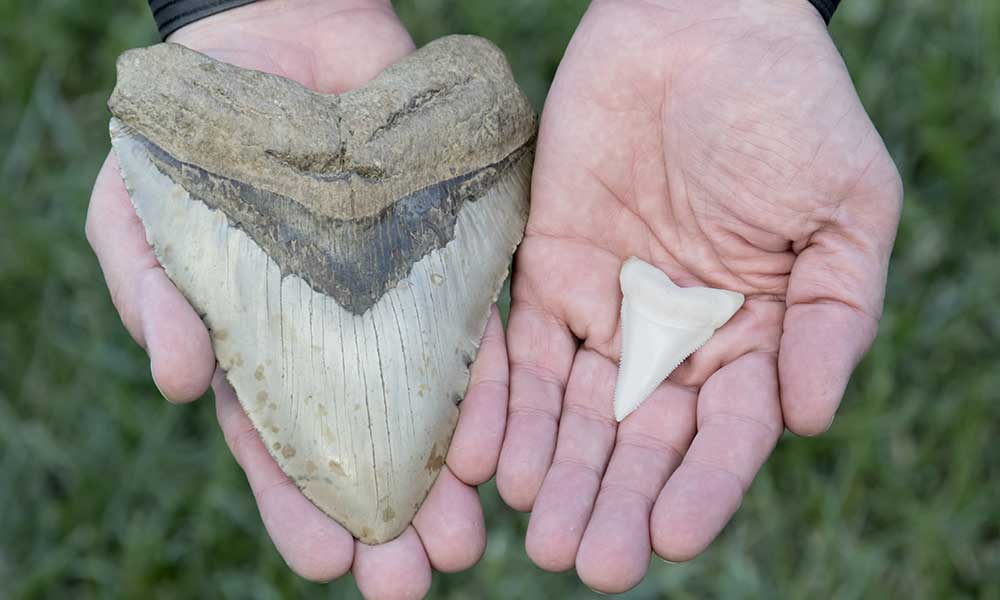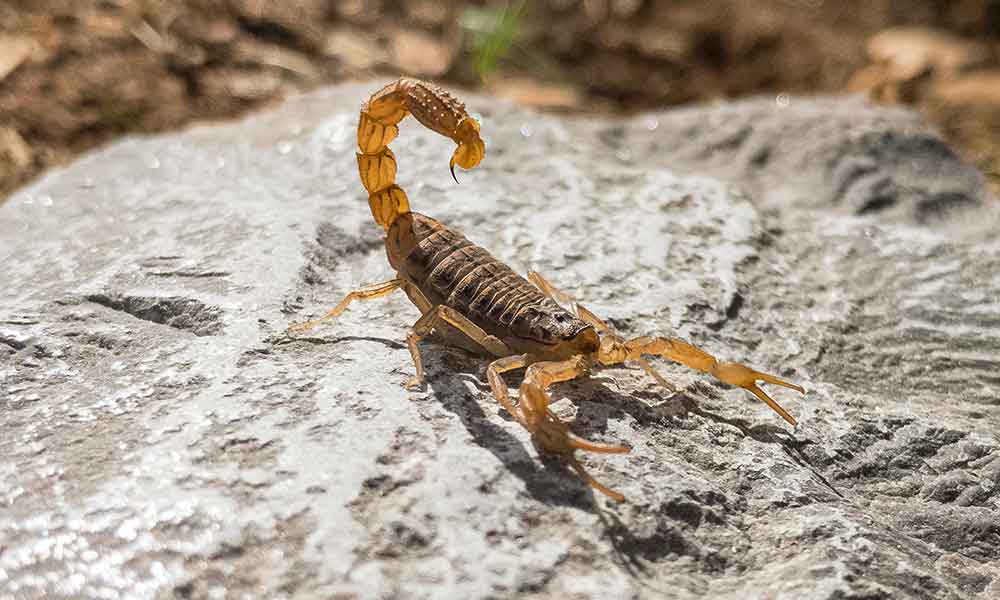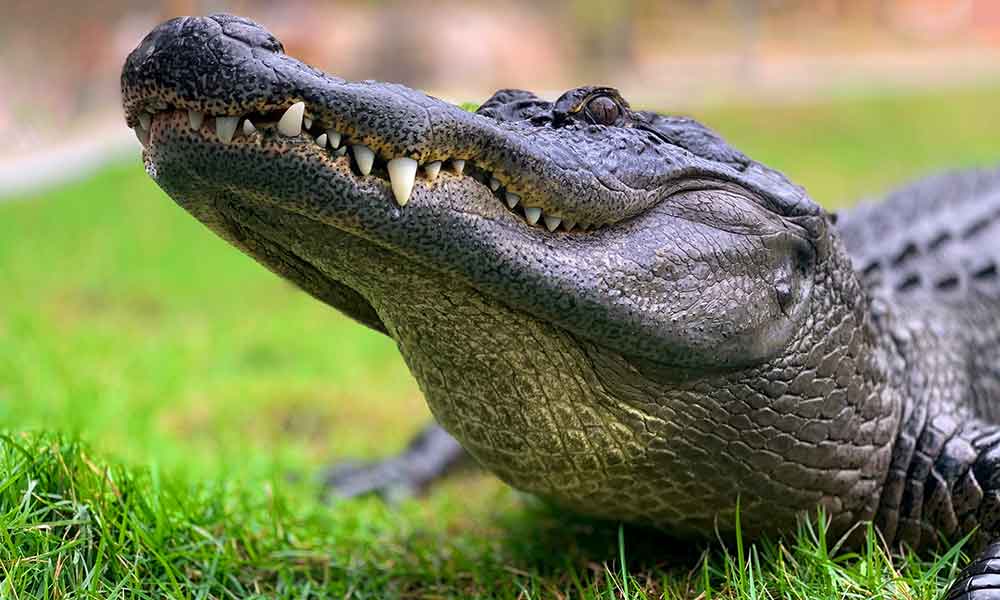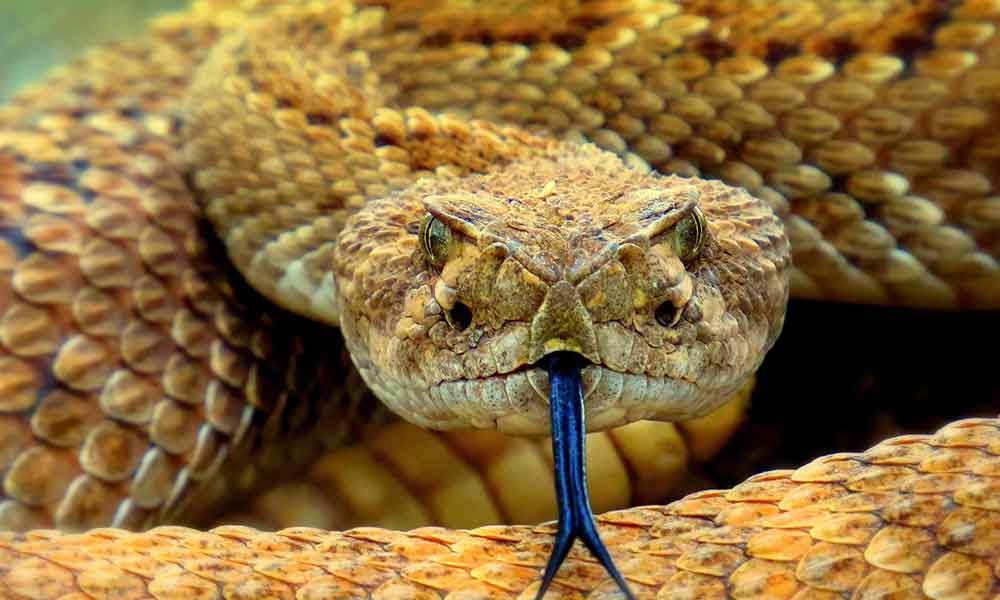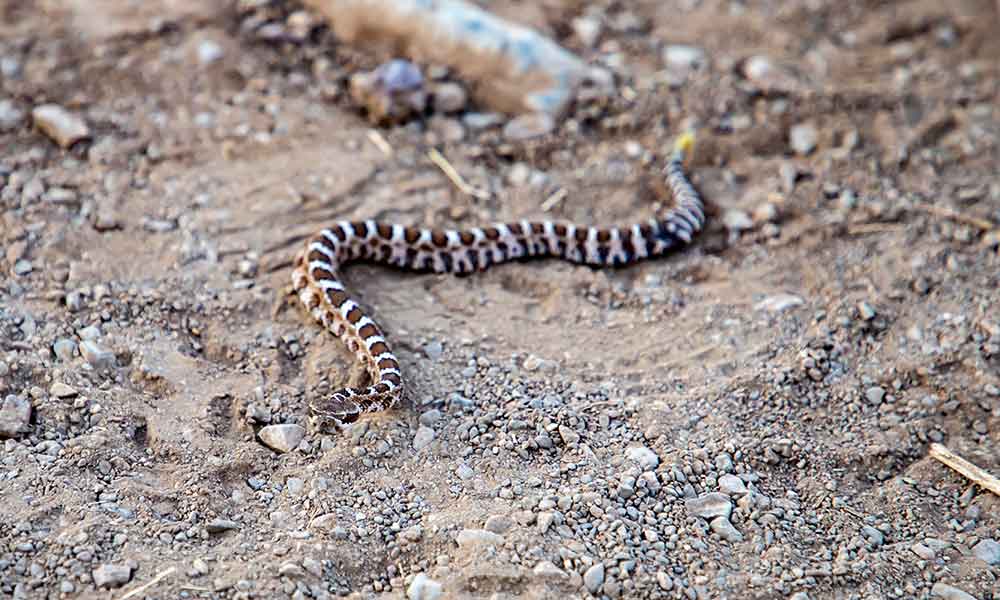The megalodon (Otodus megalodon) is an extinct shark species that existed several million years ago and has become the stuff of legend ever since it was first classified.
Its name comes from the ancient Greek words meaning “giant tooth” and is distantly related to the great white shark, stemming from an extinct family group that diverged from the great white over 100 million years ago.
It is estimated that the megalodon weighed 120,000 lbs. Compare that to the 1,200 – 2,400 lbs that an adult great white weights. That is a lot of shark.
Nicknamed “the Meg”, the megalodon has appeared in numerous works of fiction over the years, including the 2018 movie The Meg and numerous B movies.
Megalodon: The Largest Shark in the Sea
Not only is the megalodon the biggest shark in the recorded history of this planet, but it’s also one of the biggest fish.
Estimates suggest that it could have reached a total length of 60 feet, making it three times larger than the biggest great white shark on record.
How Much Did a Megalodon Weigh?
Megalodon probably weighed up to 120,000 lbs., the equivalent of nearly 10 African elephants, and their dorsal fins were over 5 feet tall.
Where Did Megalodons Live?
These giant sharks lived in temperate and subtropical regions and megalodon fossils have been found around Europe, Africa, Australia, and the Americas.
What Did Megalodons Eat?
They have been described as the most powerful predators to have ever lived, with a speed, size, and power that was unmatched by anything else in the sea or on land at the time.
An adult megalodon would have used these attributes to prey upon sea turtles, dolphins, whales, and other marine mammals. Cetothere whales of up to 23 feet were also a likely choice.
Was a Megalodon Bigger Than a Blue Whale?
To get an idea of just how big and awe-inspiring a megalodon would have been, look no further than the blue whale, as this marine mammal is actually much bigger than the megalodon.
Blue whales can be up to 100 feet in length and weigh as much as 400,000 lbs.
Megalodon Teeth
Pretty much everything that we know about the megalodon comes from megalodon teeth.
The average megalodon tooth was between 3 and 5 inches (the largest megalodon tooth measures 6.9 inches) and was attached to a colossal jaw that contained over 270 teeth.
A megalodon jaw could exert up to 40,000 pounds of force per square inch and this, in combination with the shape, size, and quantity of megalodon teeth, made this massive shark the ultimate predator and ensured it remained at the top of the food chain during a very competitive period.
Can I Buy A Megalodon Tooth?
There are a surprisingly large number of megalodon teeth out there and they are regularly sold on auction sites and by collectors.
Fossilized teeth are often found at the bottom of creeks and have been located throughout the United States, with the majority coming from Florida, South Carolina, and North Carolina.
If you want to get your hands on a giant shark tooth, you can either wait for one of these auctions and send a few hundred bucks, or you can search for them yourself.
How Did the Megalodon Go Extinct?
Although we don’t know exactly when the megalodon became extinct, we do know that it had disappeared by the end of the Pliocene era around 2.6 million years ago.
The reason for the extinction of the megalodon shark is still up for debate, but it’s believed to have been the result of global cooling.
Simply put, the planet got colder, the megalodon’s prey adapted by changing its habitat, and the megalodon itself simply couldn’t follow suit.
The strongest bite force and most fearsome teeth in the ocean count for nothing if there is no prey to hunt.
It has been estimated that as many as a third of all marine animals became extinct around the same time.
It serves as a reminder that the extinction of a single animal or group of animals can have far-reaching consequences that impact the whole world.
Are Megalodons Still Alive?
The oceans are vast and unseen by human eyes, and there’s over 80% that we still haven’t explored.
If we think about that in the context of total landmass, it’s as if we had yet to explore any of Asia, Africa, North America, or South America.
Just think about how limited our knowledge of the world would be if we’d only set foot on Antarctica, Europe, and Australia.
All things considered, it’s easy to see why people believe that certain “extinct” creatures could still be around today.
It’s hard to believe that a giant monster has lived, reproduced, and thrived in Loch Ness for hundreds of years, but it’s not too much of a stretch to suppose that monstrous squids, fish, and other bizarre creatures could be living in the deepest part of the ocean.
Does that mean the megalodon could still be alive? Potentially…but probably not.
Firstly, megalodons lived in warm water and wouldn’t survive in the cold and unforgiving waters of the deep ocean.
And if it wasn’t living in the deep, we’d know about it.
It’s nice to think that our world could still be inhabited by beautiful, bizarre, and even terrifying creatures that resemble prehistoric beasts. It’s why we’re all fascinated by stories of the Loch Ness Monster, Bigfoot, the Yeti, and the Kraken.
But for a species to survive for millions of years, it would need to cycle through countless generations and each generation would need to be large enough to sustain the species.
We’d see bones, bite marks, bits of tooth lodged in prey. We’d have evidence that didn’t consist of questionable footprints in the mud and fuzzy video cam footage of the shores.
As far as the megalodon is concerned, we would have encountered a lot of modern megalodon teeth—they would be plentiful enough to be discovered and big enough to be distinctive.

